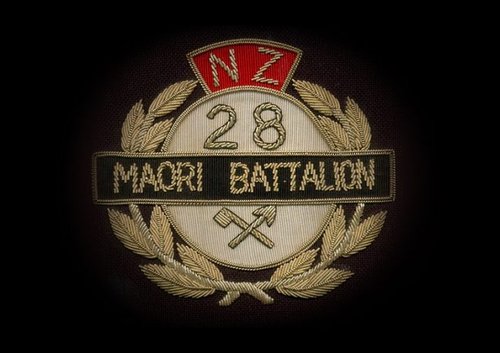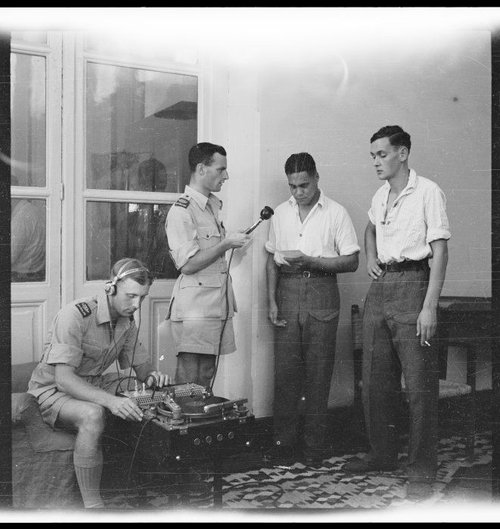
The exhibition is called Te Hokinga Mai o Te Rōpū Rua Tekau mā Waru.
The broadcast of the Wellington pōwhiri for the men went out on nationwide radio station 2YA, so Māori listeners all over the country would have been able to hear that their men were finally back in Aotearoa on January 23, 1946. The broadcast was recorded on the waterfront on multiple, 16-inch, acetate discs (tape recording technology did not come into use until the mid-1950s), probably using equipment carried in the Broadcasting Service’s Mobile Recording Unit truck.
A Mobile Unit truck had also been in action during the war, travelling with New Zealand forces in North Africa and Italy. Many men of the Māori Battalion had already been recorded by its microphone, sending messages to whānau back home for the radio programme “With the Boys Overseas”, which was broadcast twice a week.

28th New Zealand (Maori) Battalion with the New Zealand Broadcasting Unit, taken during World War II (1939-1945) by Dr C N D’Arcy. Ref: DA-11481-F. Alexander Turnbull Library.
After Wellington, the Mobile Unit broadcasters then followed the men from Waikato and Te Tai Tokerau to their pōwhiri. Producer Leo Fowler recalled:
“With Jim Norman and Cyril Brown we did a trip to Ngāruawāhia and Kaikohe by special plane on the occasion of the return of the Māori Battalion. The Māori Battalion was handed back to the Māori people at these places and we went along to make a historical record…”
– Leo Fowler: MS Reminiscences on the Mobile Recording Unit. Ngā Taonga Sound & Vision collection.
To record these events, a Presto portable disc recorder, similar to the one in the photo below, was taken on the plane and set up at the marae in Ngāruawāhia and Kaikohe.

Charles Goodwyn Lewis (recording), John William Proudfoot (holding microphone), Sergeant Harry A Taituha, Private C A Petrie. Photograph taken by George Robert Bull circa 3 November 1943. Ref: DA-03223-F. Alexander Turnbull Library.